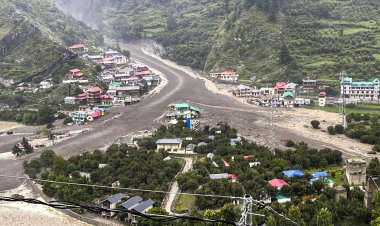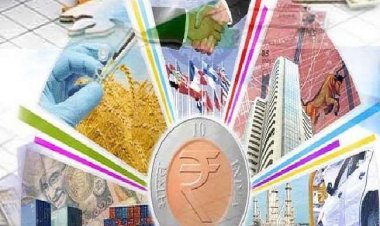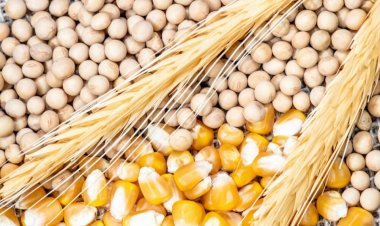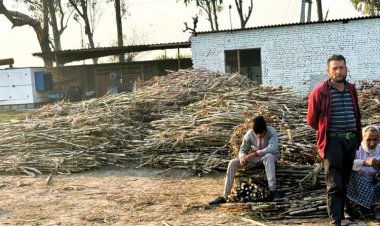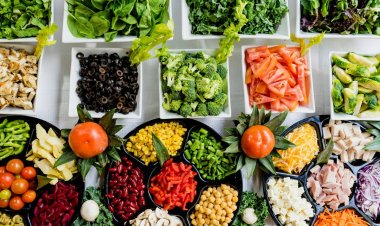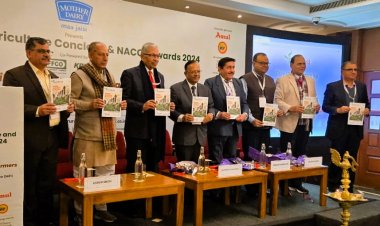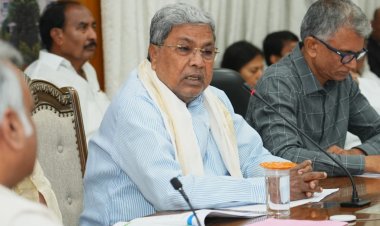The shift in Fertilizer Policy: Move towards Natural Farming?
To promote fertilizer use, to avoid a rise in crop prices, and to subsidize agriculture, it is vital to supply fertilizers to the farmers at a reasonable level. The relevance of fertilizer subsidy comes at this stage when prices to the farmers are fixed much below the average cost of fertilizer production.
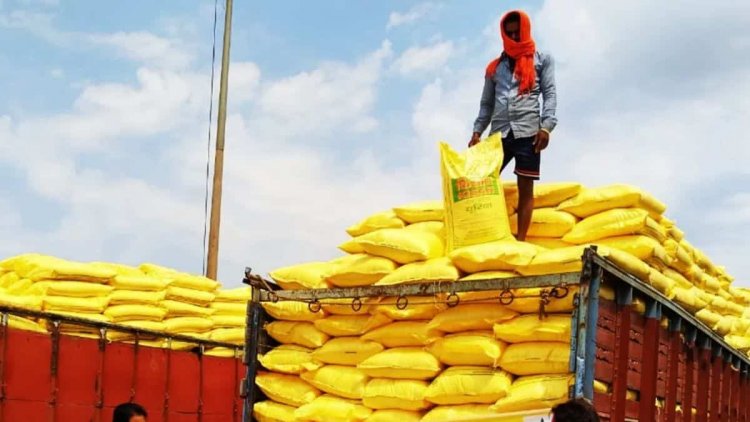
Being a vital input that provides plant nutrients to agriculture, without which the productivity of agriculture will go down drastically and hence negatively impact the country's food security, India identified fertilizers as an essential commodity in Essential Commodities Act, 1955 (ECA). The regulation comes at this stage. The market failures in non-interventionist situations will negatively impact a country like India, with a large population to feed and a significant chunk of the population still depends on agriculture directly or indirectly.
The importance of regulating the fertilizer sector, which comprises the producers, consumers, and the government, through government intervention can be examined by analyzing the likely outcomes of not intervening in the fertilizer sector, assuming the sector is competitive. In such a sector, every consumer of fertilizer products will be supplied by some source at a cost (which includes production + transport and distribution costs) that is not higher than any other cost, be it domestic or imported. On the other hand, every producer of fertilizer products will realize the same amount of return from sales to different consumers and will get no higher return from selling to those he is not selling currently. Given such markets' equilibrium, some consumers could be priced out of the market if their demand prices are below the supply prices from any sources. Some producers could also be priced out if their supply prices were above the demand prices of any consumers. Then, the producers must close down their manufacturing units. Similarly, the producers who are getting a price above their unit variable costs but not their total costs too will have to close down in the long run (Segura, Shetty and Mieko. 1986). This will lead to market failure. But what if such interventionist policies bring high costs to the government?
Mounting Fertilizer Subsidy
To promote fertilizer use, to avoid a rise in crop prices, and to subsidize agriculture, it is vital to supply fertilizers to the farmers at a reasonable level. The relevance of fertilizer subsidy comes at this stage when prices to the farmers are fixed much below the average cost of fertilizer production. The government provides the difference between these two as a subsidy to the fertilizer manufacturers; otherwise, it would result in the exit of the producers from the market. Based on the Marathe Committee (GoI, 1976) recommendation, India started providing fertilizer subsidies from 1976-77. The Fertilizer subsidy, as a part of the intervention in the pricing, has increased from a mere Rs. 60 crores in 1976-77 to Rs. 225222.3 crores in 2022-23.
As of now, India provides subsidies for Urea products and non-urea products. The largest produced and consumed fertilizer in India, Urea, is sold at a rate the government statutorily fixes. The difference between this rate and the net market realization by the manufacturing units of Urea is given as the Urea subsidy to the manufacturers/importers. The non-urea products come under the Nutrient Based Subsidy (NBS), where the government fixes the subsidy rate (in Rs/Kg) on each nutrient, like Nitrogen, Phosphate, Potash and Sulphur, contained in the subsidized on-urea product on an annual basis.
Analyzing the fertilizer subsidy in the last few years reveals that the subsidy has been more than Rs. One lakh crore over the last three years (See the figure), making the revised estimate of 2022-23 the highest-ever fertilizer subsidy since its introduction. There was a 177.62% hike in the fertilizer subsidy in 2023-23 compared to 2019-20. The reasons for such a hike are 2; the Global fertilizer crisis and India's high dependence on fertilizer import. According to the World Bank, the fertilizer price index has risen around 15 per cent from earlier this year, and the prices have more than tripled compared to two years ago. The reasons for such a crisis are six; increased global demand, rise in the cost of inputs for fertilizers, shortage of supply in the international market, domestic policies, geopolitical risk and the Russia-Ukraine War. Key crop-growing regions have strong demand for chemical fertilizer products and have acted as a driving force on the price hike. Crops like corn and Soybeans had a greater need for potash and phosphatic fertilizers at the global level due to increased crop acreage. Secondly, higher input costs for producing various fertilizer products have also bolstered the prices. In the case of Phosphatic fertilizers, raw materials like sulphur and Ammonia have faced a sharp increase in prices due to the Covid 19 restrictions. On the other hand, in the case of Urea, the feedstock costs hit a record high in 2021, primarily for Asian LNG and western U.S. Natural Gas.
The factors like the high cost of inputs to unfavourable weather led to supply shortages in the domestic markets of many countries. This resulted in fertilizers falling below the requirements in the global market. Reduced fertilizer availability in the domestic market made several economies implement policies to meet domestic availability. For example, the policies adopted in China led to banning export to the international market, the lead producer and consumer of fertilizer products globally. Late in July 2021, the National Development and Reform Commission decided to curb the export of fertilizers due to the high prices of the products in the domestic market. Such a move resulted in a reduced supply in the international market for fertilizers. The rising coal prices in China have also forced manufacturing companies to cut production. Russia and Egypt have also capped export as a part of their policies. From the geopolitical side, the imposition of economic sanctions by the European Union and the United States on Belarus, which meets one-fifth of the world potash demand, has created uncertainty in the potash market. Such impositions have acted as an essential driver of fertilizer prices. The tensions between Russia and Ukraine have created a supply shortage in the international market and a natural gas price hike.
The global fertilizer crisis hit the country (Mankunnummal, 2022 & 2023). High import dependence, 25% in Urea, 90% in Phosphatic fertilizers and 100% in Potassic fertilizers (GoI. 2022), is making the country the victim of the international fertilizer price hike. Being a high importer of fertilizer products, the prices automatically increase whenever India enters the global market as a buyer, given that the demand and supply determine the international prices. Besides that, India has entered into long-term supply arrangements with other countries.
Move towards a Policy Shift?
The subsidy policies adopted in the fertilizer sector had induced the fertilizer consumption in the country. The figure shows India’s fertilizer consumption (kilograms per hectare of arable land) is much below than other countries like China, Bangladesh, Brazil etc. But still, India started pushing hard for Natural Farming nowadays. Where does this push come from?
The increasing fertilizer subsidy is worrying the Government. The government is stressing the need to move towards natural or organic farming to contain the subsidy. This can be seen from Prime Minister Narendra Modi's speeches on 16th December 2021 at National Conclave on Natural Farming to "liberate the country's soil from chemical fertilizers and pesticides" and on 1st January 2022 at a PM-KISAN programme urged the farmers to "switch to the chemical-free method of cultivation". Last year, on 28th May, in the IFFCO seminar, the Prime Minister again pushed for organic farming by saying that 'it is the new mantra' and that it will reduce the dependence on other countries for fertilizer products. Prime Minister had also appealed to the country's farmers to reduce urea use by 50 % in agriculture fields for soil health upgradation and to gradually reduce the use of chemical fertilizers and eventually stop the use to protect soil health (GoI 2023). The Economic Survey 2021-22 (GoI, 2022) also specifies the importance of finding alternative fertilizers and reducing the use of chemical fertilizers in agriculture. Culminating all these, the government proposed a new programme in the latest budget, 2023-24, which is PM-PRANAM (PM Programme for Restoration, Awareness, Nourishment and Amelioration of Mother Earth) to promote alternative fertilizers in all the states and union territories and incentivize them in balanced use chemical fertilizers, which is possible through reducing the consumption of Urea, the most used nitrogenous fertilizer in India. In this budget, the government is also trying to facilitate the farmers to adopt natural farming through Bhartiya Prakritik Kheti Bio-Input Resource Centres. Recently, in July 2023, the Government announced a policy to promote organic fertilizers in the country through a market development assistance under the umbrella of GOBARdhan (Galvanizing Organic Bio-Agro Resources Dhan) initiative.
On the other hand, pushing for organic or natural farming without giving much preparation and awareness to the farmers may also have adverse effects on agriculture production, as we have the case of Sri Lanka, which gave more preference for organic farming over fertilizers.
(Writer is a Doctoral Scholar at Centre for Development Studies, JNU)



 Join the RuralVoice whatsapp group
Join the RuralVoice whatsapp group




















